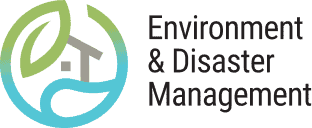Published on:
1 April 2017
Share this:
Urban flooding typically results from multiple factors at multiple scales. Changes to land use upstream or in the region, or other factors within city limits, can lead to local flooding. The case below illustrates how urban flooding can be managed at different scales.
In 1998, intense rainfall led to a severe flood and inundation of sand and mud in the capital city Kinshasa, Democratic Republic of Congo (DRC). Over 10,000 homes and businesses were flooded, leading to widespread displacement, and another 90,000 commune residents experienced a disruption to services and livelihoods.
In response to the flood, USAID OFDA funded a project by Catholic Relief Services (CRS) to assess flood risk from a watershed perspective and improve flood risk management. The project team characterized the watershed and determined the primary cause of the flood was from upstream surface runoff adjacent to the impacted communes.
To address flood risk, the project included managing upstream surface runoff, retaining water in the project area, clearing waterways of debris and refuse, and raising community awareness about flood risk and sanitation.
The project team worked with local residents to construct 17 small dams using bamboo cuttings, grass and sandbags to better manage the upstream surface runoff. They also strengthened existing water retention basins, cleared debris from canals and waterways, and seeded portions of the watershed with grass. CRS trained local residents to perform the work and maintain the canals and retention basin improvements. Additionally, CRS gave commune residents information on public health and on the importance of reducing flood hazards and keeping drains and waterways free of debris. The projects success is based in part on the use of local materials, where appropriate, and the ability to keep the project scale small and manageable.
No repeat flooding has been reported in the area since this project was completed, and the commune continues to see benefits from this initiative. A co-benefit of this flood risk management project was a significant improvement in public health outcomes immediately following its implementation. A 2002 DRC Ministry of Health study showed that the public health education, in combination with the solid waste management component of the project, reduced the incidence of cholera by 90% when compared to pre-flood conditions.
Case study adapted from the following source:
Charles A. Setchell, Kinshasa, DRC: An Early Success Story in Urban DRR, USAID, 2004, last accessed May 8, 2016.



